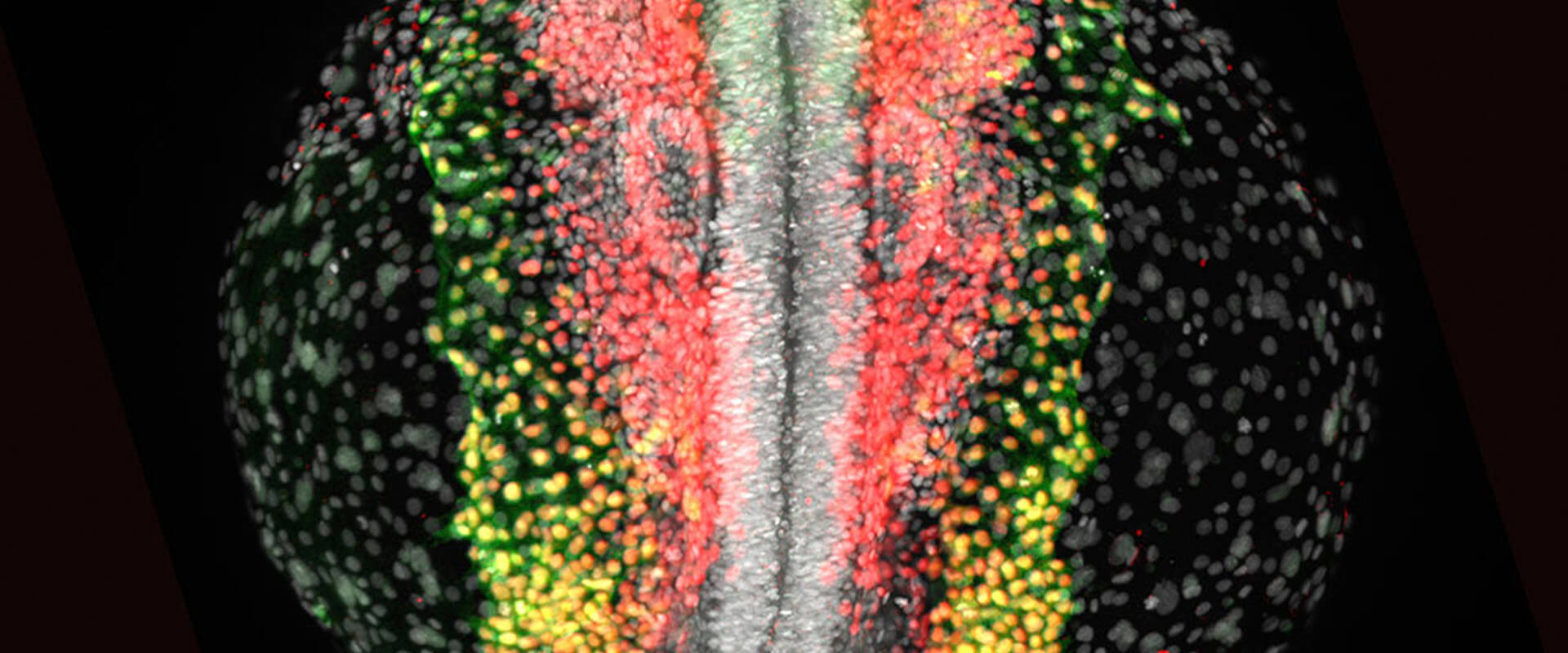Reciprocal Repression between Sox3 and Snail Transcription Factors Defines Embryonic Territories at Gastrulation
IN researchers in collaboration with the National Institute for Medical Research (NIMR) have found the mechanism that ensures the formation of the nervous system.
The shaping of the early embryo involves the conversion of a single layer of ectodermal cells (the epiblast) into a multilayered structure. Epiblast cells internalize and generate the mesoderm and the endoderm which will later give rise to the majority of tissues and organs. Cells that remain in the epiblast keep their epithelial character and will contribute to the ectodermal derivatives, namely the central nervous system and the epidermis. Therefore, it is crucial to identify not only those factors that induce cell ingression but also those that prevent it, as protection from ingression is necessary to ensure the formation of the nervous system. In this work we show that in the decision to internalize is mediated by reciprocal transcriptional repression of Snail2 and Sox3 factors. In the embryo, Snail-expressing cells are converted into motile cells that ingress while Sox3-positive cells, unable to ingress, ensure the formation of ectodermal derivatives. Thus, the subdivision of the early embryo into the two main territories, ectodermal and mesendodermal, is regulated by changes in cell behavior mediated by the antagonistic relationship between Sox3 and Snail transcription factors. They have also found that the relationship between Sox3 and Snail is conserved in the mouse embryo and in human cancer cells. The latter may have important implications in tumour biology, as Snail reactivation in tumours contributes to the first steps of the metastatic cascade and it is considered a target of anti-invasive drugs.

 Español
Español
